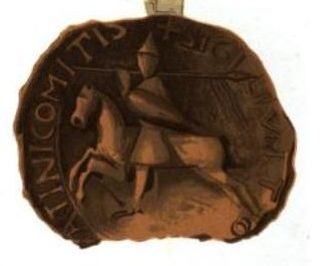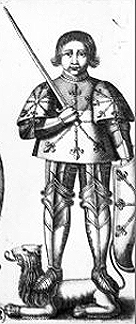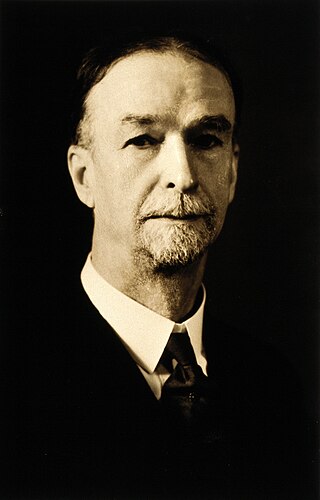
Stephen Henry was the Count of Blois and Count of Chartres. He led an army during the First Crusade, was at the surrender of the city of Nicaea, and directed the siege of Antioch. Returning home without fulfilling his crusader vows, Stephen joined the crusade of 1101. Making his way to Jerusalem, he fought in the Second Battle of Ramla, where he was captured and later executed.

The Duchy of Brittany was a medieval feudal state that existed between approximately 939 and 1547. Its territory covered the northwestern peninsula of Europe, bordered by the Atlantic Ocean to the west, and the English Channel to the north. It was also less definitively bordered by the river Loire to the south, and Normandy, and other French provinces, to the east. The Duchy was established after the expulsion of Viking armies from the region around 939. The Duchy, in the 10th and 11th centuries, was politically unstable, with the dukes holding only limited power outside their own personal lands. The Duchy had mixed relationships with the neighbouring Duchy of Normandy, sometimes allying itself with Normandy, and at other times, such as the Breton–Norman War, entering into open conflict.

Theobald the Great (1090–1152) was count of Blois and of Chartres as Theobald IV from 1102 and was Count of Champagne and of Brie as Theobald II from 1125. Theobald held Auxerre, Maligny, Ervy, Troyes and Châteauvillain as fiefs from Odo II, Duke of Burgundy.

The Count of Champagne was the ruler of the County of Champagne from 950 to 1316. Champagne evolved from the County of Troyes in the late eleventh century and Hugh I was the first to officially use the title count of Champagne.

Geoffrey II, called Martel, son of Fulk the Black, was Count of Anjou from 1040 to 1060 and Count of Vendôme from 1032 to 1056. He fought battles against William VII, Duke of Aquitaine, Theobald III, Count of Blois, and William, Duke of Normandy. During his twenty-year reign Geoffrey II faced the ambitions of the Bishop of Le Mans, Gervais de Château-du-Loir, but was able to maintain his authority over the County of Maine. Martel founded the Abbey aux Dames in Saintonge and also -in collaboration with his wife Agnes- founded the Abbaye de la Trinité at Vendôme. The first mention of Geoffrey II in the Gesta Normannorum Ducum reads: "Geoffrey, count of the Angevins, nicknamed Martel, a treacherous man in every respect, frequently inflicted assaults and intolerable pressure on his neighbors."

Theobald is a Germanic dithematic name, composed from the elements theod- "people" and bald "bold". The name arrived in England with the Normans.
Theobald III of Blois was count of Blois, Meaux and Troyes. He was captured in 1044 by Geoffrey II, Count of Anjou, and exchanged the County of Touraine for his freedom. Theobald used his nephew's involvement with the Norman invasion of England to gain authority over the County of Champagne. He died in 1089.

The County of Blois was a feudal principality centred on Blois, south of Paris, France. It was created just after king Clovis I conquered Roman Gaul around AD 500. Between the 8th and the 13th centuries, it was amongst the most powerful vassal counties within the Kingdom of France, after having succeeded in surrounding the Capetian dynasty's lands of France since Blois annexed the Champagne.

Odo II was the count of Blois, Chartres, Châteaudun, Champagne, Beauvais and Tours from 1004 and count of Troyes and Meaux from 1022. He twice tried to make himself a king: first in Italy after 1024 and then in Burgundy after 1032.

Odo I, Count of Blois, Chartres, Reims, Châteaudun and Omois, lord of Provins, was the son of Theobald I of Blois and Luitgard, daughter of Herbert II of Vermandois. He received the title of count palatine from King Lothair of West Francia.
Theobald I, called the Trickster, was Count of Blois, Tours, Chartres and Châteaudun, as well as Lord of Vierzon and Provins. He was a loyal and potent vassal of Hugh the Great, duke of the Franks.
Otto I was Count of Burgundy from 1190 to his death and briefly Count of Luxembourg from 1196 to 1197. He was the fourth son of Frederick I, Holy Roman Emperor, by his second wife Beatrice I, Countess of Burgundy, daughter of Count Renaud III.
Herbert I, called Wakedog, was the count of Maine from 1017 until his death. He had a turbulent career with an early victory that may have contributed to his later decline.

Bertha of Burgundy was Queen consort of the Franks as the second wife of King Robert II.
Odo was count of Troyes and of Meaux from 1047 to 1066, then count of Aumale from 1069 to 1115. He was later also known as the count of Champagne and as Eudes II of Troyes.

The House of Blois was a noble family that arose in the Kingdom of West Francia in the early 10th century, and whose prominent members were often named Theobald.

William Crassus I , aka Le Gros or Gras and Grace, was the son of Stephen II Le Gros born 1112 second son of his parents were Stephen I(Etienne)and wife daughter of Roger De Mortimer. William was from an Anglo-Norman baronial family long established in central Normandy. The house of Blois He inherited Sodbury from his uncle, [[William le Gros, 1st Earl of Albemarle aka Guillaume le Gros, Count of Aumale; married Cecily de Rumily of Skipton,[a] daughter of William fitz Duncan.]], primo-genitus. Brother of Stephen II - William was granted a licence to hold fairs and markets in Chipping Sodbury in 1217.
Hugh II, Count of Maine, son of Hugh I, Count of Maine, and an unknown mother, probably a daughter of Gauzlin II, Count of Maine. He was, like his father, a vassal of his uncle Hugh the Great.
The County of Châteaudun was held in the 9th century by counts who also held the County of Blois. Theobald I created the first viscount of Châteaudun with the appointment of Geoffrey I, founder of the House of Châteaudun. The viscounts were entrusted with the government of the county of Châteaudun, records of whom are continuous from the mid-10th century. The actual rule of Châteaudun between the late 9th and the mid-10th centuries, and the relationships between the count and viscounts, is uncertain. The county was revived in 1439 when the region was recreated as the County of Dunois and granted to Jean Levieux Valois des Orléans, the illegitimate son of Louis I, Duke of Orléans, son of Charles V of France.













